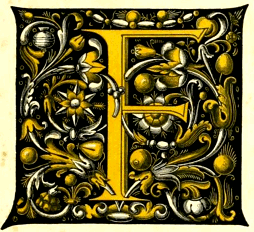
rancis Mawson Rattenbury (1867-1935) was the British immigrant who designed several of the most prominent buildings in Victoria, British Columbia. Born in Leeds, he was an apprentice architect at Lockwood and Mawson in that north of England city from 1884 to 1891. Presumably he was related to one of the Mawson brothers in the partnership. When he arrived in Vancouver, B. C., he presented architectural credentials that asserted that he had been trained by noted English architect Henry Francis Lockwood himself, although Lockwood had died when Rattenbury was just eleven years old. However doubtful his antecedents, he arrived in the B. C. capital just as the former Crown colony was enjoying tremendous growth and prosperity, and his services were soon in demand.
When the provincial government decided to replace its earliest legislature ("The Bird Cages") with something much grander, Rattenbury, with architectural drawings signed merely "A. B. C. Architect," won the competition. His Romanesque-domed "Parliament Buildings" took seven years years to complete and went drastically over budget. Since they were near completion in December 1897, the government decided to honour Queen Victoria's diamond jubilee by illuminating the 150-metre granite facade and end pavillions (the one to the right being the Premier's suite). In 1901 he also submitted a design for the South African War Memorial at the corner of Government and Belleville, although his scheme for "The Paardeburg Gate" was never realised; he was much more successful with the magnificent Canadian Pacific Railway chateau, and The Empress Hotel (1904-1908) across the street.

The Empress Hotel
Rattenbury became wealthy through supplying meat and cattle for prospectors bound for the Yukon Gold Rush, and even supplied three trains to serve the Yukon. In his personal life, he left his wife Florence Eleanor Nunn whom he had married in 1898, and took up with the twice-married twenty-seven-year-old, Alma Pakenham. Florence eventually agreed to a divorce, and Rattenbury married Alma in 1925.
The couple decided to move to the seaside resort of Bournemouth, England. However, when his financial affairs suffered reversals, Alma began an affair with their eighteen-year-old chauffeur, George Percy Stoner (1916-2000). On the morning of 23 March Rattenbury was discovered, brutally assaulted; he died four days later from massive injuries. Alma retracted her confession, but committed suicide after escaping being charged as an accessory. Stoner was sentenced to death for Rattenbury's murder, but the Home Secrtetary commuted the punishment to life imprisonment when presented with a petition bearing over 300,000 signatures. It was an enormous scandal at the time. The general sentiment was that the working-class youth had been manipularted by a ruthless older woman.
Bibliography
Barrett, Anthony A., and Rhodri Windsor Liscombe. Francis Mawson Rattenbury and British Columbia: Architecture and Challenge in the Imperial Age. Vancouver: University of British Columbia Press, 1983.
Elliot, David R. "Rattenbury, Francis Mawson." Canadian Encyclopedia.. Four volumes. Edmonton: Hurtig, 1988. Vol. III: pp. 1828-1829.
Created 20 April 2017